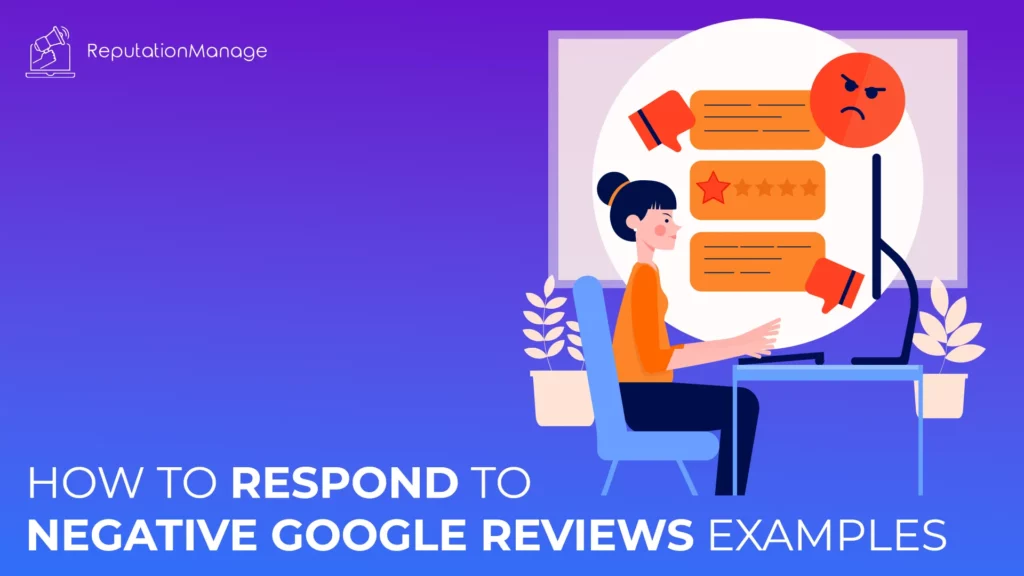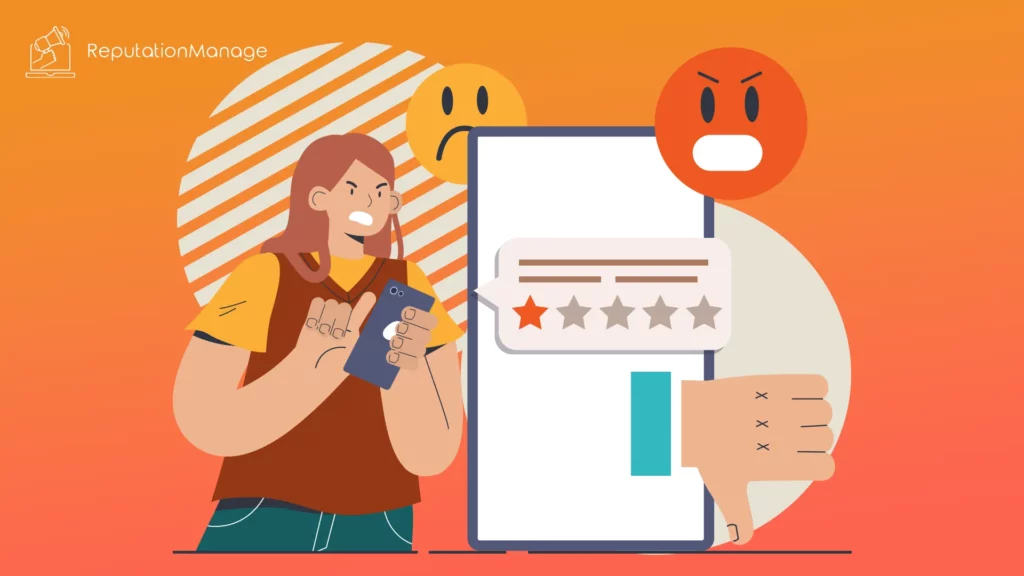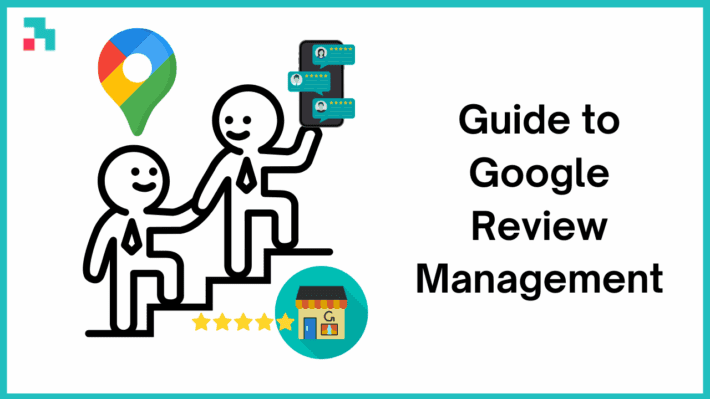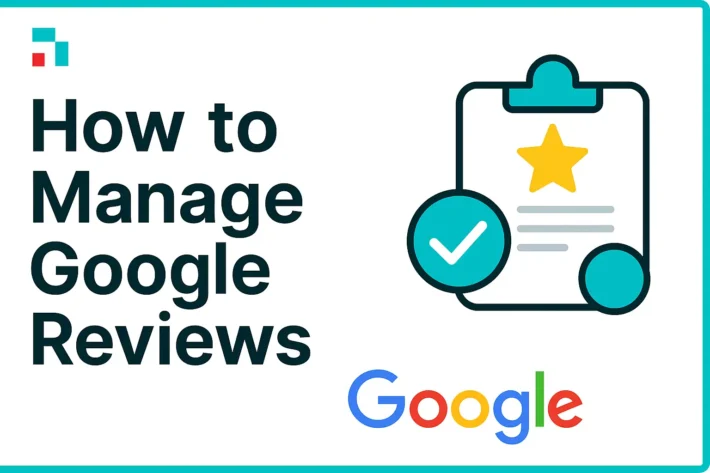How to Respond to Negative Google Reviews Examples: 7 Effective Strategies

How to respond to negative Google reviews examples can transform your business reputation overnight.
Last month, I helped a restaurant client whose star rating dropped from 4.7 to 3.9 due to a series of complaints about wait times.
After implementing our review strategy, they not only recovered their rating but also won back several unhappy customers.
Whether you’re dealing with legitimate complaints or fake reviews, knowing how to craft the perfect response matters for every business owner.
Key Takeaways
- Responding promptly to negative online reviews shows customers you care about their feedback
- Personalizing each review response improves your chances of turning an unhappy customer around
- Using templates saves time while still creating effective responses
- Apologizing professionally doesn’t mean admitting fault for incorrect claims
- The right response can transform a negative experience into a second chance
- Professional review management services can help handle complex reputation challenges
Table of Contents
Why You Should Respond to Negative Reviews

Your Google business profile isn’t just about attracting new customers-it’s about retaining existing ones.
When potential customers search for your business, they don’t just look at your star rating; they examine how you handle criticism on your review site.
Responses to negative reviews can make or break potential customer decisions.
A study by Harvard Business Review found that businesses that respond to reviews see an average rating increase of 0.12 stars. Learning how to respond to Google reviews systematically is a valuable investment for any business.
Managing negative reviews on Google effectively is important for business success.
Your response rate also signals to Google’s algorithm that you actively manage your listing, potentially growing your local search visibility.
This approach works for both positive review content and negative comments equally.
Understanding these principles allows you to craft effective responses to any criticism. These templates provide practical insight on how to respond to negative Google reviews examples that any business can adapt.
7 Strategies of How to Respond to Negative Google Reviews Examples
If you’re seeking negative review response examples, this section provides valuable templates.
When responding to bad reviews, these formats can help resolve issues quickly and professionally.
1. The Legitimate Complaint Response
When a customer highlights a genuine problem, acknowledge it directly:
“Thank you for your feedback, [Customer Name]. We sincerely apologize for the delay you experienced on Saturday evening.
You’re right that a 45-minute wait is longer than our standard, and we’ve already addressed this with our team.
We’d love to make it up to you – please contact me directly at [phone/email] so we can make sure you have a better experience next time. -[Manager Name]”
This response demonstrates:
- Personalized acknowledgment
- Clear ownership of the issue
- Specific action taken
- A concrete offer to resolve the situation
2. The Vague Complaint Resolution
For reviews lacking specific details:
“Hello [Customer Name], thank you for taking the time to share your thoughts. We’re sorry your recent visit didn’t meet expectations.
We’d appreciate hearing more details about your experience so we can address your specific concerns.
Please contact our customer service team at [phone/email] so we can make things right. We value your feedback and hope to serve you better in the future. -[Manager Name]”
3. The Factually Incorrect Review Reply
When facing inaccurate claims:
“Hello [Customer Name], thank you for your review. We take all feedback seriously and have investigated the situation you described.
Our records indicate some details differ from your experience-our restaurant wasn’t open on the date mentioned. We’d like to understand more about your visit.
Please contact us at [phone/email] so we can identify what happened and address your concerns properly. Customer satisfaction remains our priority. -[Manager Name]”
This approach:
- Politely corrects misinformation
- Avoids accusing the customer of lying
- Opens a private channel for resolution
When dealing with negative feedback, this template maintains professionalism.
While it may be tempting to remove negative reviews when you can, doing so eliminates the opportunity to demonstrate your commitment to customer satisfaction.
However, in cases of clearly fake or policy-violating content, knowing how to delete Google reviews through the proper channels can be necessary to protect your business reputation.
4. The Emotional Outburst Management
For highly emotional reviews:
“We appreciate your feedback, [Customer Name]. We’re truly sorry to hear about your frustrating experience.
Your concerns about our [specific issue] have been shared with our management team for immediate attention.
We understand your disappointment and would welcome the opportunity to discuss this further and make it right. Please contact me personally at [phone/email]. -[Manager Name]”
This approach shows:
- Empathy toward customer feelings
- Acknowledgment without escalation
- Professional tone despite criticism
5. The Competitor or Fake Review Response
For suspected fake reviews:
“Thank you for your comment. We take all feedback seriously and have thoroughly reviewed our records but cannot find any customer interaction matching this description.
We pride ourselves on providing excellent service to every customer and would like to investigate this matter further.
Please contact us directly at [phone/email] with additional details about your visit so we can properly address your concerns. -[Manager Name]”
This respond to a negative approach remains professional while subtly indicating the review may not be legitimate.
6. The “Second Chance” Opportunity
When you want to win back business:
“Hello [Customer Name], thank you for bringing this to our attention. We’re disappointed to hear about your negative experience with our [product/service].
This falls short of our standards, and we’ve already implemented changes to prevent this from happening again.
We’d love a second chance to show you the service we’re known for. Please call us at [phone/email], and ask for me personally-I’ve set aside a [special offer/discount] for you. -[Manager Name]”
7. The “Learning Opportunity” Acknowledgment
When you’re making improvements based on feedback:
“We sincerely appreciate your honest review, [Customer Name]. Your feedback about our [specific issue] highlights an area where we need to improve.
Looking For Google Reviews? Claim your Discount Below
We’ve already begun [specific action taken] based directly on your comments.
While we can’t change your past experience, we’re grateful for the opportunity to serve our customers better moving forward.
If you’d be willing to give us another chance, please contact me at [phone/email]. -[Manager Name]”
This approach showcases how to effectively respond to a negative while maintaining professionalism.
This respond to a negative review approach shows:
- You value constructive criticism
- The feedback has led to concrete changes
- You’re actively improving your business
How to Handle Reviews on Google Effectively

Looking at these templates, several critical patterns emerge that you should incorporate into your review response templates:
Address the Customer by Name
Using the customer’s name personalizes your response and shows you’re addressing their specific situation, not copying and pasting a generic reply.
Thank Them for Their Feedback
Even when facing harsh criticism, start by thanking the reviewer. This sets a respectful tone and acknowledges that all customer feedback has value.
Apologize Appropriately
Express genuine regret for their negative experience without necessarily admitting fault if the claims are inaccurate. Phrases like “We’re sorry to hear you were disappointed” acknowledge feelings without confirming incorrect assertions.
Take the Conversation Offline
Always provide a direct contact method to continue the discussion privately. This prevents a public back-and-forth that can escalate tensions and harm your online reputation.
Offer a Specific Solution
When possible, mention concrete steps you’re taking to address their concerns or offer a specific remedy like a refund, replacement, or special discount.
Keep It Concise
Effective responses stay focused and brief. Lengthy explanations can come across as defensive or argumentative.
Sign with a Name and Title
End with your name and position to show that a real person with authority is addressing the concern.
Common Mistakes When Handling Negative Google Reviews
Even with great templates as guides, businesses often fall into these traps:
- Using generic templates – Each response must address specific details of the negative review. Cookie-cutter responses feel unprofessional and alienate the unhappy customer.
- Responding emotionally – Never write a response when angry or defensive. Wait until you can address the situation with a clear head.
- Arguing with reviewers – Public disputes damage your reputation regardless of who’s “right.” Maintain a solution-oriented approach.
- Ignoring reviews completely – 45% of consumers are more likely to visit businesses that respond to negative reviews. Not responding suggests you don’t care about customer concerns.
Fun Fact: According to a 2023 BrightLocal survey, 89% of consumers read businesses responses to reviews on Google, and 57% say they would be “not very” or “not at all” likely to use a business that doesn’t respond to reviews on their review site.
Deleting negative feedback eliminates your opportunity to demonstrate commitment to customer satisfaction.
Thoughtful responses to criticism often impress potential customers more than perfect ratings. Handling both positive and negative reviews shows authenticity.
Creating a Strategy to Respond to Every Review
To consistently provide great responses to criticism, develop a comprehensive strategy for handling customer feedback:
- Establish a monitoring system by setting up alerts to notify you of new Google reviews, allowing for quick responses. The ideal response rate is within 24-48 hours.
- Create a response framework by developing templates for common review types while making sure each response is customized. This balance saves time while avoiding cookie-cutter replies.
- Assign response responsibility by designating specific team members to handle review responses, securing a consistent tone and quality in all communications.
Sometimes, handling negative online reviews requires expert assistance, particularly in these situations:
- Volume overwhelms your team – If you receive too many reviews to handle internally, professional review management services can help maintain your response rate. Using review response examples from professionals often yields better results.
- The criticism has legal implications – Reviews containing potentially defamatory content or legal threats should be addressed with professional guidance.
- A pattern of negative reviews emerges – If you notice consistent complaints about specific aspects of your business, reputation experts can help identify and address underlying issues.
Here at ReputationManage.co we specialize in helping businesses develop effective strategies for handling all types of reviews, from crafting the perfect response to building a proactive approach that generates more positive review testimonials.
Need a quick push for your business reputation? You can also buy Google reviews, a simple way to get more eyes on your business while staying within Google’s rules.
Our experts understand how both responding to positive and negative feedback effectively.
Tools to Streamline Your Review Responses
Many review management platforms offer how to respond to negative Google reviews examples within their software to help businesses respond more efficiently.
Several tools can help you manage and respond to reviews more efficiently:
Google Business Profile Manager
The free Google My Business dashboard lets you receive notifications and respond directly to your reviews on Google.
Review Management Software
Platforms like Birdeye, Podium, and ReviewTrackers consolidate customer reviews from multiple sites and provide templates. These tools help create effective review response examples quickly.
AI Writing Assistants
Tools like Grammarly make sure your responses are grammatically correct and maintain an appropriate tone when interacting on your review site.
Turning Negative Reviews Into Positive Opportunities

The best approach to respond to criticism doesn’t just resolve immediate concerns-it transforms critic relationships into loyal advocates.
With the right positive review strategy, you can balance out negative comments.
After addressing the initial complaint, consider these follow-up strategies:
Once you’ve resolved their issue, politely ask if they’d consider updating their review to reflect their new experience.
Use the critical feedback to make genuine business improvements, then mention these changes in future marketing materials.
With permission, document success stories of how you turned around negative situations, demonstrating your commitment to customer satisfaction.
These case studies serve as powerful testimonials for potential customers.
Conclusion
Learning how to respond to negative Google reviews examples is a vital skill in today’s digital marketplace.
Your responses show both the dissatisfied customer and potential future customers that you value all customer feedback and are committed to improvement.
Remember that managing reviews offers an opportunity to demonstrate your customer service excellence.
For help developing a comprehensive review management strategy, we at ReputationManage.co can help you transform your approach to online reputation management today.
Frequently Asked Questions
What is a good response to a bad Google review?
A good response to a bad review acknowledges the customer’s concerns, apologizes for their negative experience, offers a specific solution, and provides contact information for further discussion.
It should be professional, empathetic, and solution-oriented rather than defensive. A positive review approach to criticism shows maturity.
How to respond to a disappointing review?
To respond to a negative review that’s disappointing, thank the customer for their feedback, express genuine regret for their experience, explain any relevant context without making excuses and invite them to continue the conversation privately to resolve their concerns.
What is the most common response to negative feedback?
The most common response to criticism follows a four-part structure: acknowledgment of the issue, an apology for the experience, an explanation without excuses, and an action plan to resolve the concern.
Using review response examples of how to respond from successful businesses can guide your approach.
How do you respond to a fake negative review example?
Finding good ways on how to respond to negative Google reviews examples is important when dealing with suspicious feedback.
When responding to bad reviews that appear fake, remain professional while noting that you can’t find a record of their described experience.
Invite them to contact you directly with specific details about their visit so you can investigate properly, and report the review to Google if it clearly violates their policies.



